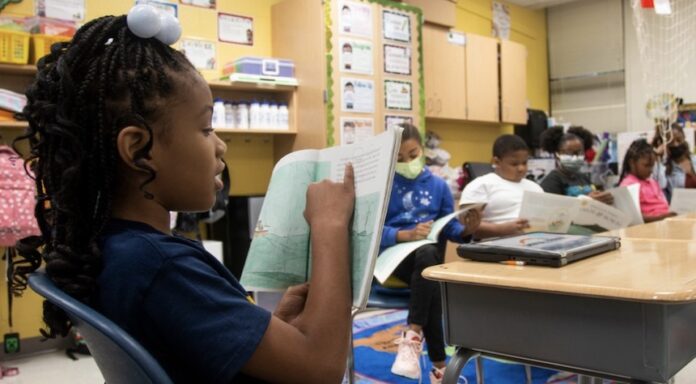The Sisters of Mercy taught me to read more than 60 years ago. As a child, I was eager to learn and learned the basics of reading quickly. This included learning phonics and sounding out words. It was easy and natural.
In the 1970s, public schools made the biggest mistake in American education history when they abandoned the traditional approach to teaching children how to read and adopted a “whole-language” approach. The new method relied more on word recognition and cues to help with reading than decoding or phonics.
The outcome was a total disaster. The decline in reading ability was unstoppable even before COVID’s test scores dropped through the roof.
Now, educators have discovered a new answer: phonics. New York City Schools are about to introduce updated phonics programs that will, hopefully, improve this crucial skill for students.
Wall Street Journal
Jocelyn Testa, a teacher in the first-grade class at that school, led a lesson in which students pronounced words like “hippo”, “neat”, and “clean” last week. The children sat in a small group near a window in the corner of the room and read from “Joaquin’s Zoo” as Ms. Testa decoded the words.
Terrance Mims is a fourth grader who is nine years old. He felt that the method was effective. He said that sounding out the letters in a given word helps him pronounce it more clearly. You can break it down and get an idea of how to say it.
Wisdom from the children’s mouths.
The answer is not phonics. It’s a good idea to begin by teaching teachers. Teachers may not be familiar with teaching phonics, as it hasn’t formally been taught since the parents were in primary school. Michael Mulgrew, the president of the New York Teachers Union, thinks this is a good decision. But, “it all comes down to whether the department can implement a training program that’s uniform across all schools.”
David Banks, the Chancellor of New York City Schools, says that this will be the district’s first mandate on how to conduct reading lessons. The district has over 1 million students.
In an interview conducted last week, Mr. Banks, a former teacher and principal of the city, stated that “we’re all really working hard on the wrong path.” “My goal is to get us on the right track.”
Teachers College Reading and Writing Project at Teachers College of Columbia University provides professional development to about 150 New York City Schools for a balanced literacy curriculum. According to the project, about 15% of American primary schools use a part of the curriculum that isn’t produced by the project.
The new plan that Mr. Banks will introduce does not include a curriculum but has been updated to place a greater emphasis on phonics. Lucy Calkins is the founding director of The Reading and Writing Project. She said, “We have all been searching for a new way to use the science of literacy without throwing out the baby with the bathwater.”
The transition from “whole language” to “the science” of reading is not difficult for very young children. It may be more difficult for older children. This decision will pay off both in the short term and long term.




